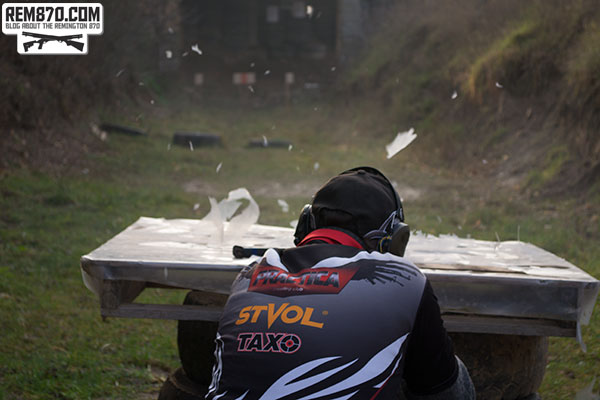Using Cover Properly
Do not confuse cover with concealment. There is a very important distinction between the two. Cover can be concealment but concealment is not always cover. Cover is protection from rounds, shrapnel and debris blown about. Concealment prevents someone from seeing you, which may be vegetation you are crouched behind or you are simply concealed in the shadows. This article will discuss how to use cover in a tactical situation.

Shooting at Targets
Cover available in an urban environment would be concrete, stone or brick walls. You can also use vehicles if the engine is between you and the shooter, wooden walls and even certain doors. Obviously, it easier to find cover from direct small arms fire like handguns or even rifles, but what you may consider cover can deteriorate or be destroyed if you are receiving heavy indirect fire from mortars and other larger artillery, so you must always be prepared to abandon your cover. Typically, in a combat situation you will be receiving direct and indirect fire so you may have to make your own cover.
Soil and sandbags can be used for cover, by building up a berm of soil and reinforcing with sandbags. In some cases, you would only have cover from the directions of round and not on your flank or back. If you have the time, you would dig a depression and encircle your position with soil and sandbags. You want to ensure you can escape quickly so make it so you can easily escape over the sides.
Returning Fire from Cover
You want to be able to return fire from cover without becoming a target yourself and your training is to, not return fire over the top of your cover. The reasons not to return fire over the top are because you are an easier target, you are silhouetted and a large portion of your body is exposed. Additionally, resting your weapon on any hard surface will cause it to bounce when fired and you cannot maintain target discipline. However, you cannot always choose the ideal cover so you may have to fire over the top.
Firing from either side of cover may mean you have to switch shooting hands. Right-handed shooters would find it difficult to fire from the left side of the cover because you would have to expose more of your body unless you switched shooting hands.
Cover is used to reload, call for help and to catch your breath and gather intelligence about the situation. Unless you have previous knowledge of the area you will have to choose, your cover as the situation dictates and of course, it will never be ideal cover. In most cases, you will be crouched behind something or you will use a brick wall that you have to peer around to return fire.
Once behind cover you have to determine the force you are dealing with and the potential for being flanked by other shooters. You may have to seek cover from multiple shooters in various locations. A good shooting team will make it difficult for anyone to find cover from all shooters. Experienced shooters will have already determined the likely cover that their target would choose and will have set up shooters to cover those areas.
An ambush situation makes it difficult to find cover and in the initial burst of gunfire, the ground can be cover for a few seconds while you search the area. Ambushes occur where the shooting team is concealed and the target would be in the open.
Home Defense and Cover
You as the homeowner have the advantage when it comes to cover because you know where it is. Typically, intruders would be armed with handguns, shotguns and possibly even large caliber rifles. The typical sofa or sitting chair would not provide any cover. Large wooden sideboards or cabinets might and it depends on the size and type of wood used. Counters and large appliances such as refrigerators and washers and driers can also be cover. Hot water tanks can be in some cases but they are usually tucked away in a corner of the laundry room and garage or even the basement. Walls can provide some cover but large caliber rounds, shotgun slugs and rifle rounds can penetrate most walls unless the round hits the wall studding.
Know what cover is available outside of your home as well as the inside. Cover outside can be vehicles, tool sheds and detached garages, large decorative rocks and stone retaining walls.
Always scan whatever area you may happen to be in for cover. As you walk into a restaurant, movie theater or mall look for potential cover because shooting can start anywhere at any time regardless of the location.
Related Post:

